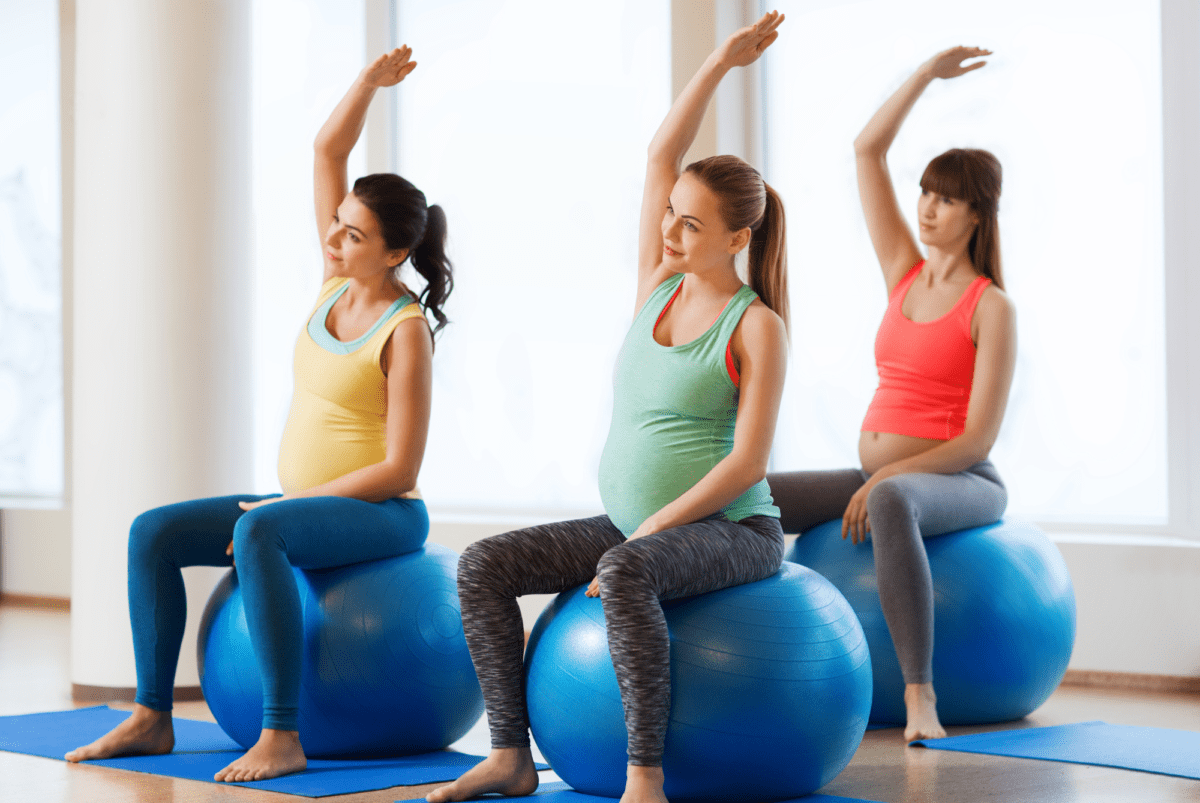Prenatal exercise – your top questions answered

Falling pregnant is an exciting time, but it can also open the door to a wave of new worries. Your body is going through a lot of change, and suddenly there is a whole list of do’s and don’ts to inform your daily habits.
Exercise in pregnancy is a confusing concept for many expectant mothers. Should you be exercising? What’s okay and what’s not? How does all this affect the baby?
Once, pregnant women were ordered on bed rest and told not to lift a thing. Fortunately, we now know this to be unnecessary as research points toward the benefits of exercise during pregnancy. In fact, the Australian Physical Activity and Sedentary Behaviour Guidelines for pregnancy are the same as those for non-pregnant adults.
However, that’s not to say that there won’t be certain precautions and modifications. Today we address your top questions on prenatal exercise.
What are the benefits of exercise during pregnancy?
Staying active during pregnancy can be highly beneficial for both you and your baby. Not only is it a great way to stave off boredom or restlessness, but it can also be a rewarding outlet for managing your mental health.
Benefits of exercising through pregnancy include:
- preparing the body for labour and recovery
- reducing back and pelvic pain
- lowering risk of incontinence
- bettering mental health, including a lower risk of postnatal depression
As your body undergoes many changes throughout pregnancy, it can trigger other conditions. Prenatal exercise programs have been shown to reduce the risk of developing conditions such as:
- Gestational diabetes
- Gestational hypertension
- Preeclampsia
- Excessive weight gain
The added bonus is that engaging in prenatal exercise classes can be a great way to meet new people going through a similar experience. Pregnancy, especially a first pregnancy, can be daunting and overwhelming. Exercise offers a chance to connect and destress while getting your body in the best possible state to welcome a new life.
What type of exercise is best during pregnancy?
The appropriate type of exercise for pregnant women will be different for every person. It will depend entirely on the exercise you were doing before falling pregnant. If you’re a gym goer 3-4 times a week, then this is perfectly fine to continue during pregnancy. If you’ve long been a runner, then keep at the tracks!
Over time, you’ll modify the exercises you’re doing and the intensity that they’re being performed based on the physical condition you’re in. The same goes for cyclists, yoga lovers, swimmers – whatever your typical medium of exercise may be.
If you’re someone who hasn’t exercised before, it is recommended that you start by doing some low intensity exercise, then slowly build up to the recommended amount. Prenatal pilates is a great place to start for pregnant women who haven’t exercised before. Prenatal pilates takes the gravity out of exercising, it’s lower impact, and uses a variation of movements. It incorporates strength training, aerobic training and stretching in a low impact environment.
The best prenatal exercises will depend on your own preference. Some of our favourites are:
- Strength training
- Pilates
- Yoga
- Hydrotherapy
- Walking
- Running
- Cycling
In a nutshell, when it comes to exercising through pregnancy, stick to what you know. Now is not the time to take up a running career or powerlifting for the first time.
Exercises to avoid during pregnancy
With all that being said, there are some movements that are best avoided during pregnancy. Be mindful of any sort of jumping or jarring activities. During pregnancy, the body releases hormones that loosen and relax your muscles, joints and ligaments to help the body stretch. This can make the body slightly more prone to injury. Care should be taken when stretching too, ensuring you do not go further than necessary.
Use common sense with activities that are going to be somewhat unsafe, in terms of fall risks and high impact. This might mean hanging up the snowboard or waterskis for a few months.
The Australian guidelines recommend avoiding activities that involve:
- High risk of falling or collision
- Intense straining while lifting
- Significant changes in pressure (such as sky diving or scuba diving)
How much should you exercise while pregnant?
Now that we’ve covered the ‘what’, let’s explore the ‘how much’. It’s true that too much of a good thing can equal a bad thing. But the good news is that the limit is far higher than we once thought.
The national guidelines suggest being active most days, preferably every day, to a weekly total of either:
- 2.5 to 5 hours of moderate-intensity physical activity
- 1.25 to 2.5 hours of vigorous-intensity physical activity
- an equivalent combination of moderate and vigorous activities.
The approach to exercising while pregnant can be viewed similarly to the approach to giving up alcohol; Before trying to fall pregnant, many women will give up alcohol to put their body in the best shape to welcome a new life. The same goes for exercising. We recommend getting your body into the best physical state that you can manage at that time. This gives your body the best chance to fall pregnant and have a healthy pregnancy while mitigating as many risks as possible.
If you still feel unconfident in your exercise routine or simply want an expert hand to guide you along the way, we are here to help.


